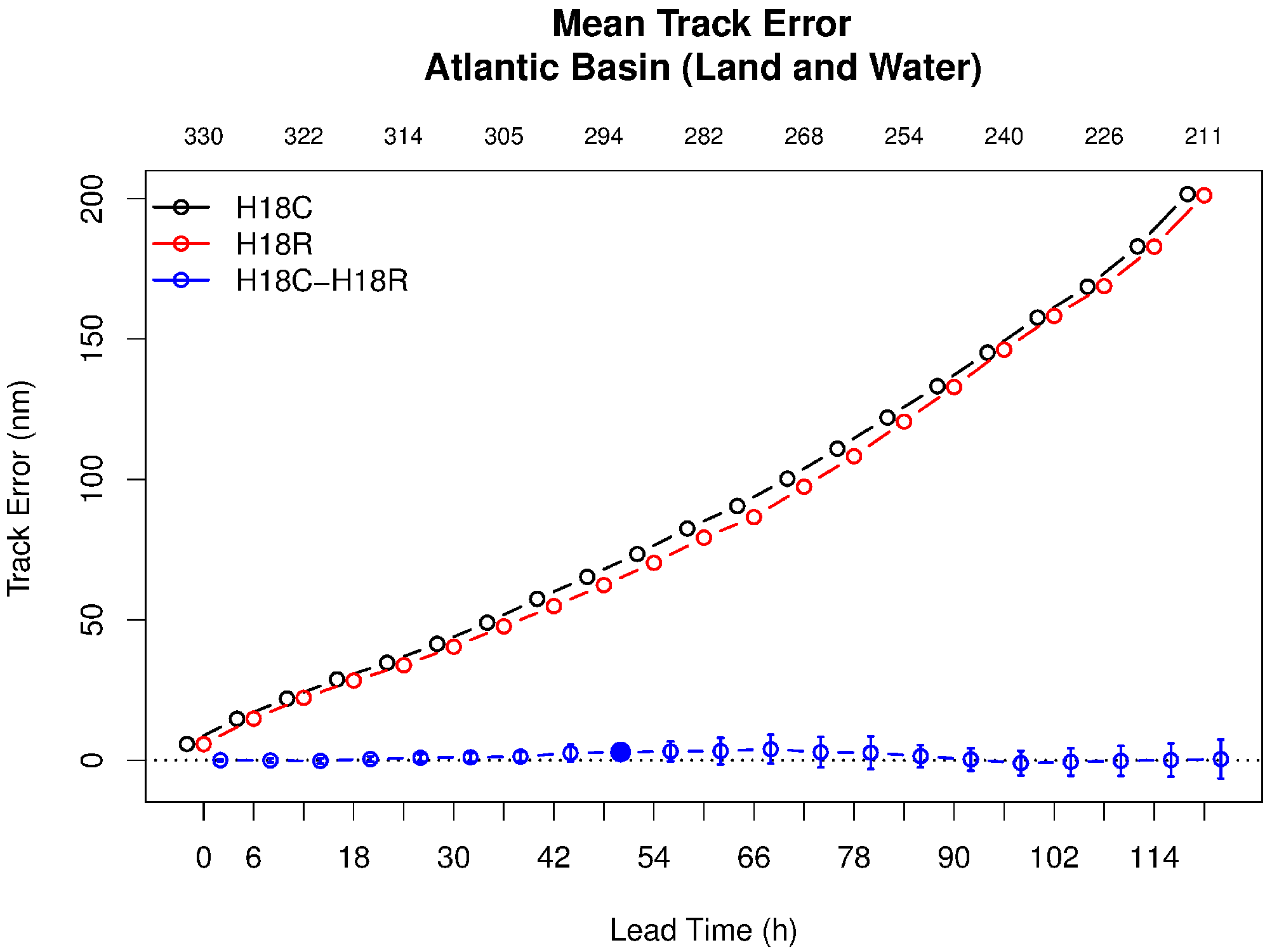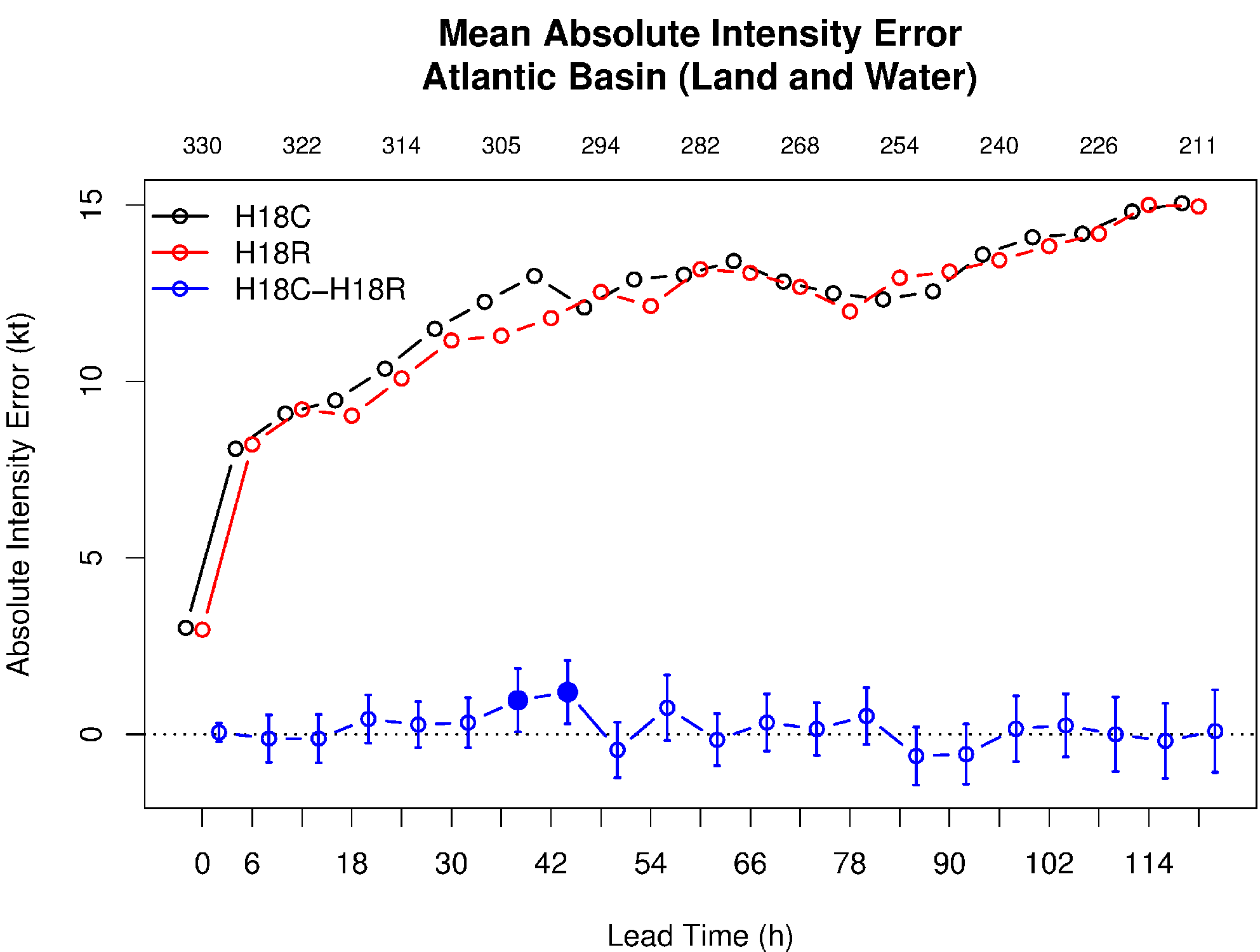The Hurricane Weather Research and Forecast system (HWRF) is one of NOAA’s operational models used to predict the track, intensity, and structure of tropical cyclones. Each winter, scientists at NOAA’s Environmental Modeling Center (EMC), the Developmental Testbed Center (DTC), and NOAA’s Hurricane Research Division (HRD) perform testing and evaluation (T&E) on possible changes to the HWRF physics schemes, dynamic core, and data assimilation system that have the potential to improve HWRF predictions. Many of these potential changes are innovations from the research community that have been added to branches within the HWRF code repository in the past year, with guidance from the DTC. These branches are then retrieved from the repository by EMC and DTC staff to perform annual T&E. This yearly upgrade cycle illustrates the seamless exchange of innovations from the research community to operational testing environments, which is facilitated by the code management and developer support provided by the DTC.
This year, the DTC effort focused on T&E of two potential upgrades to model physics. The first looked at upgrades to the Rapid Radiative Transfer Model for General Circulation Models (RRTMG) radiation scheme made available by John Henderson and Michael Iacono of Atmospheric and Environmental Research (AER) through the DTC Visitor Program. The second replaced the Scale-Aware Simplified Arakawa-Schubert (SASAS) cumulus scheme with the Grell-Freitas scheme, based on work by Georg Grell (NOAA’s Global Systems Division), Saulo Freitas (NASA), and Evelyn Grell (NOAA’s Physical Sciences Division) that was funded by the Hurricane Forecast Improvement Project (HFIP). The DTC also participated in several experiments led by HRD and EMC to determine the impact of assimilating additional data to improve the HWRF initial conditions.
Each of these potential upgrades was first tested individually by running retrospective HWRF forecasts on a subset of tropical cyclones from the past three years in the North Atlantic ocean. For these initial tests, EMC selected sixteen storms that provided a mixture of storm intensities, storm motion directions, and previous operational model performance. For the RRTMG radiation scheme upgrades, the DTC ran nine of the sixteen storms before EMC staff decided the forecast improvements (~4% for both track and intensity) merited including the changes in the 2018 version of HWRF. Results from the Grell-Freitas experiment indicated the scheme was not yet ready for operational implementation. However, the results are informing additional changes to the code by the developers, who are working with DTC and EMC staff to test an improved version of their scheme later this summer. For the data addition experiment, the DTC ran 2–3 storms for each additional data type, which helped EMC determine that wind data from the Stepped Frequency Microwave Radiometer and inner-core dropsondes should be assimilated into HWRF in 2018.
Once the 2018 configuration of HWRF is finalized, DTC and EMC will work together to merge the final version of the code back to the HWRF trunk. This step will enable researchers to add additional innovations to the latest version of the code, ensuring that any scientific results are directly applicable to the operational HWRF, which will position the community well for next year’s HWRF pre-implementation tests. With additional opportunities for transition of research to operations in upcoming versions of the model, DTC staff look forward to continuing to lend their expertise in code management, developer support and T&E to the community!

